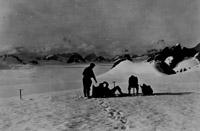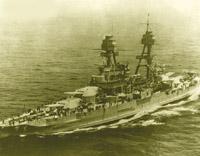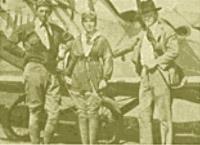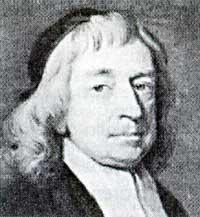War and adventure development
2000/03/01 Kortabarria Olabarria, Beñardo - Elhuyar Zientzia Iturria: Elhuyar aldizkaria

From extreme situations, the conquest of the South Pole. XX. A dream that in the first decade of the twentieth century was about to conquer brave adventurers, became a reality in this second decade. The feat belonged to the Norwegian explorer Roal Amundsen, who made his dream come true on December 14, 1911. In the conquest of the white continent a competitive atmosphere prevailed, so Amundsen made his journey in silence. This was ahead of the British Robert Falcon Scott, who reached his goal on January 17, 1912. The above was not, however, Amundsen's first trip to the South Pole, as he had previously done some. His first trip to Antarctica took place in 1897 with the Belgian navigator Gerlatze. From 1903 he made numerous exploration trips. In 1906 he analyzed the magnetic pole and confirmed that it was moving. He lived the adventure of Amunds, and death arrived in the Arctic Ocean in 1928, seeking the expedition organized by the Italian Noble.
Like the unknown territories, the adventurers of that time kept looking at the sky. One of the most important achievements of the first decade was to cross the English channel in this area, while in this second decade they managed to cross the Atlantic. On July 6, 1919, a British guide balloon landed in the United States after a long journey through the Atlantic. As he ascended into heaven he was given as much importance as being there. Albert Berry was the first man to jump to the parachute (1912), while the woman was called Georgia Broadwick (1913).

Also ships carrying aircraft became famous in this decade, when on January 1, 1911, for the first time, a plane left the ship USS Pennsylvania and was able to it. Therefore, it has subsequently been more than one ship called USS Pennsylvania. War progress, or delays?, were numerous, I. Because the World War is this decade. Just to mention the first battle between planes, the use of poisonous gases, tanks, bombers...
Aside from public exploits, the harvest of laboratory work was also fruitful. In 1911 the American biochemist from Poland, Casimir Funk, discovered vitamins. A year later he also published the theory of vitamins. According to this theory, some diseases — beriberia, pellagra, rickets, scurvy… — were the result of poor nutrition, since some substances, vitamins, were missing in the diet. Funk considered that vitamins were essential for life and that in all of them nitrogen was a basic component; now we know that the structure of one vitamin to another is very different and that nitrogen is not an essential element. However, its discovery has allowed eradicating diseases such as beriberia.

Following the theoretical questions, Albert Einstein must be brought back to these lines, since in 1916 he presented the Theory of General Relativity. Another great researcher of the first epoch of atomic research was Ernest Rutherford, who proposed a new atomic model. Rutherford bombed the metal plate from alpha particles produced by a radioactive substance. In doing so he realized that most alpha particles crossed the plate. Consequently, Rutherfor proposed a new atomic model in which the nucleus was formed by particles of large mass and small volume, and on the outside by particles of small volume and mass. Subsequently, in this matter Niels Bohrn also gave much to say for the postulates he proposed.
Apart from the adventures, advances in health, theories and a series of inventions or events carried out under the protection of war, the discovery that has emerged at that time and has reached to date: stainless steel. The invention was by the British Henry Brearly in 1913. Stainless steel has no corrosion at both normal and low temperatures. As the amount of carbon increases the hardness of the steel increases, but in stainless steel the amount of carbon is very small. Contains chromium and nickel.
It may be the most relevant inventions and facts of the second decade of the twentieth century, but there were more. Others are:
- 1910, the French physicist George Claude invents the neonal light. Two years later, the Cinzano house put its first neon announcement in Paris.
- 1911, presented the first gyroscopic compass, a tool that allowed to be a fixed reference to be able to orient itself without using magnetism.
- 1912, doctor Gaston Odin discovered the carcinogenic microbe.
- 1913, the Geiger counter is invented. This instrument can count the particles sent by the body with radiation.
- 1913, the new variety of wolfram is patented. It was therefore used in the filaments of the bulbs. Thus, the evaporation of the filaments was smaller and the bulbs lasted longer.
- 1914, Thomas Alba Edison managed to build an accumulator and an alkaline battery of great power. They already existed but quite scarce. This invention improved the batteries of the cars.
- 1914, Alfred Benesch invented the first traffic light that regularly works for the American city of Cleveland. Four years later, British traffic lights started using a tricolor system.
- 1914, aerospace engineer Robert Goddar patented a two-phase rocket.
- 1915, Alexander Graham Bell inaugurated the first intercontinental telephone service from coast to coast.
- 1915, the British army developed the hydrophone, a sensor capable of detecting the noise produced by submarine engines.
- 1918, American astronomer Harlow Shapley discovered the size and shape of the Milky Way.
- And many other less important: silk socks (1910), zipper (1913), puppeteers (1914), first chemical detergent (1916), fridge and blender (1918), pen (1919)...

Gai honi buruzko eduki gehiago
Elhuyarrek garatutako teknologia




